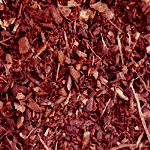
A Rich Bark Soil Amendment

Forest Humus is most commonly used as an additive to provide long-lasting improvement of soil structure. You’ll find it is unsurpassed as effective mulch for heat absorption and water conservation.
Forest Humus has been scientifically treated to eliminate the soil nitrogen depletion common with other wood residuals. It has long-lasting properties that only bark can provide – nature intended it to resist decomposition.
Architects and contractors prefer Forest Humus because its versatility and free-flowing characteristics make it easy to apply and easy to blend. It is available in standard grade and in large quantities. This product is derived from the bark of fir and pine. It is carefully graded and is available in raw form or as a nitrogen-stabilized material. It is a characteristic of the bark of source material to contain moderate quantities of phosphate and potassium that are available for plant utilization. Processing may include the addition of iron in the form of sulfate to balance out nutritional requirements plus wetting agent or water to improve ease of wetting should the product become dry.
UTILIZATION
LANDSCAPE: Soil incorporation to improve soil structure frequently calls for a rate in the range of 2”material worked into a total depth of 6”. This calculates to 6 cu. Yds./1,000 sq. ft. Rotary tilling equipment is employed in order to obtain a uniform blend. If quantities greater than 2” are to be worked into the soil, it is desirable to apply 1 to 2 inches and work this in prior to making a second application. In some cases shallow amending is desired, and the only difference is setting a shallower depth of tiller. In addition to soil amending, Forest Humus is employed for mulching around shrub, flowerbed, and ground cover areas to provide temperature insulation, prevent crusting, and conserve moisture.
NURSERY: Soil mixes for container growing are commonly prepared using two-thirds Forest Humus and one-third sand or soil of grower’s choice. Appropriate fertilizers are added.
GREENHOUSE GROWING: For a pot plant mix, the grower will frequently use one-third Forest Humus, one-third peat moss, and one-third soil or sand of choice. This medium provides ideal conditions of aeration, drainage, and moisture retention. The same mix or one comprised of higher proportions of Forest Humus is frequently employed for preparation of beds for cut flower growing.
|
|||||||||||||||||||||||||||||||||||||||||||||||||||||||||||||||||||||||||||||||||||||||
|
